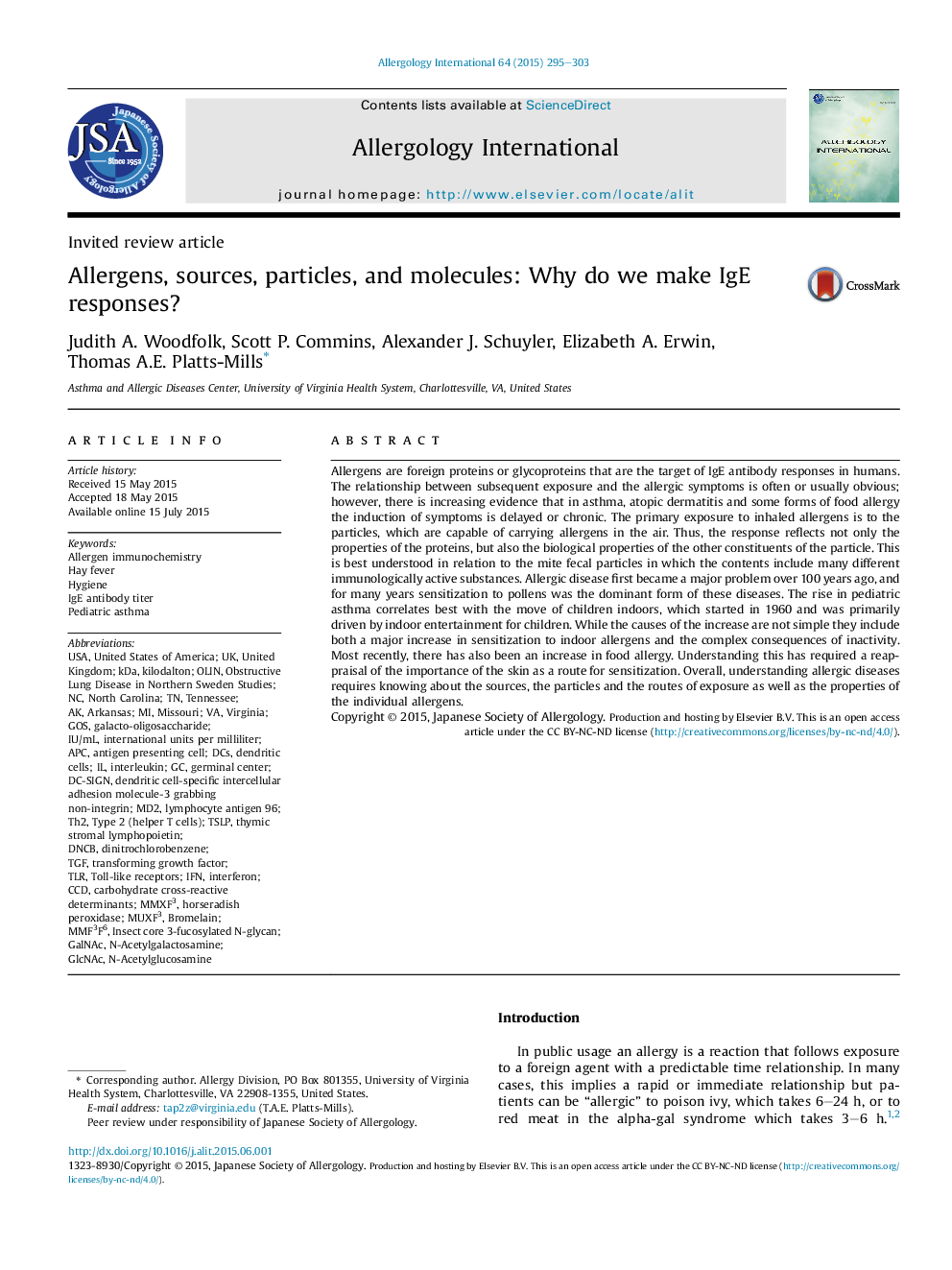| Article ID | Journal | Published Year | Pages | File Type |
|---|---|---|---|---|
| 3340550 | Allergology International | 2015 | 9 Pages |
Allergens are foreign proteins or glycoproteins that are the target of IgE antibody responses in humans. The relationship between subsequent exposure and the allergic symptoms is often or usually obvious; however, there is increasing evidence that in asthma, atopic dermatitis and some forms of food allergy the induction of symptoms is delayed or chronic. The primary exposure to inhaled allergens is to the particles, which are capable of carrying allergens in the air. Thus, the response reflects not only the properties of the proteins, but also the biological properties of the other constituents of the particle. This is best understood in relation to the mite fecal particles in which the contents include many different immunologically active substances. Allergic disease first became a major problem over 100 years ago, and for many years sensitization to pollens was the dominant form of these diseases. The rise in pediatric asthma correlates best with the move of children indoors, which started in 1960 and was primarily driven by indoor entertainment for children. While the causes of the increase are not simple they include both a major increase in sensitization to indoor allergens and the complex consequences of inactivity. Most recently, there has also been an increase in food allergy. Understanding this has required a reappraisal of the importance of the skin as a route for sensitization. Overall, understanding allergic diseases requires knowing about the sources, the particles and the routes of exposure as well as the properties of the individual allergens.
